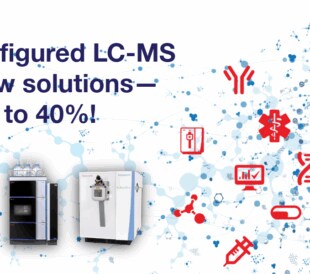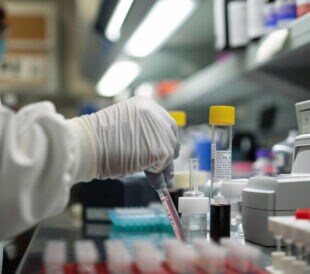 Breath testing offers a straightforward, non-invasive way to monitor our biology, providing a potential tool for the early detection of diseases and optimization of treatment through precision medicine. The potential of exhaled breath analysis is huge, with applications in many fields including the diagnosis and monitoring of disease. However, as with any field of research that is relatively new, a number of crucial challenges still need to be addressed before routine clinical implementation is possible.
Breath testing offers a straightforward, non-invasive way to monitor our biology, providing a potential tool for the early detection of diseases and optimization of treatment through precision medicine. The potential of exhaled breath analysis is huge, with applications in many fields including the diagnosis and monitoring of disease. However, as with any field of research that is relatively new, a number of crucial challenges still need to be addressed before routine clinical implementation is possible.
Learn more in our Breath Biopsy webinar or visit thermofisher.com/breath-biopsy
What is Breath Biopsy?
The concept of using breath samples to identify changes linked with health and disease is not new. For decades, researchers have been investigating the gaseous composition of breath as well as the VOCs in exhaled air to tell us more about our biology and health. In the genomics era, new technologies and an increased emphasis on high-throughput biological analysis and metabolomics have helped to expand the breath research field and interest in breathomics has grown rapidly.
Exhaled breath is more than just air; it contains over 1,000 volatile organic compounds (VOC) as well as microscopic aerosol particles, also known as respiratory droplets, originating from the lungs and airways. Both VOCs and breath aerosol represent rich sources of biological information. Conclusively, Breath Biopsy provides an entirely new way to access this information by collecting and analyzing breath samples. This makes it possible to:
-
- Investigate biomarkers for disease early detection
-
- Stratify patients by phenotype for precision medicine
-
- Detect and monitor response to treatments
-
- Measure exposure to hazardous substances and their impact on the body
Unlike liquid and tissue biopsies, which require blood or tissue samples to be taken, Breath Biopsy provides a completely non-invasive solution that maximizes patient comfort.
What are Breath Biomarkers?
Breath biomarkers largely arise either as VOCs captured from the air or as non-volatiles found within respiratory droplets from exhaled breath aerosols. Many exhaled VOCs are the products of metabolism and so reflect biochemical activities within the body. Respiratory droplets can contain non-volatile metabolites, proteins, DNA and viral pathogens offering insights into other biological processes. Both sample types can also be sources of data relating to environmental factors such as pollutants and chemical exposures that can have impacts on long-term health.
Due to their volatile nature, VOCs in breath are typically small molecules. They can arise from both external sources (food, smoking, pollution, chemicals) and from within the body itself, as such they can reflect biochemical and metabolic activity as well as environmental effects. Endogenous VOCs are often the product of metabolic processes and, as such, the metabolic effects of diseases are reflected in the pattern of exhaled VOCs. Breath Biopsy represents an adaptable and accessible means to detect and measure VOCs as biomarkers for disease. Learn more about the workflow in this white paper.

How can we measure biomarkers in breath?
The Breath Biopsy platform consists of two components: breath collection through their breath collection device which can be deployed absolutely anywhere, and sample processing. Samples are typically analyzed, and VOCs identified using detailed chemical analysis tools such as mass spectrometry.
Through the integration of mass spectrometry (GC-MS) instrumentation into Owlstone Medical’s Breath Biopsy platform, Orbitrap-based high resolution mass spectrometry will be qualified for the detection of new biomarkers via a validated discovery and routine analysis project. The GC Orbitrap enables confident identification of volatile compounds present in breath samples. The ultra-low and high concentrations encountered in these samples means that it’s essential the system is able to maintain performance at all levels. Developed in partnership between Owlstone Medical and Thermo Fisher Scientific, the new analytical methods will be used to conduct metabolomics studies of breath samples for unique biomarkers that could translate into non-invasive, routine screening solutions for improved early diagnosis of cancer and other disease.
What are the advantages of this technology?
One minute of breathing into the breath analyzer can collect exhaled breath with known biomarker VOCs, or ten minutes for the discovery of new biomarker VOCs. The process is pain free and noninvasive — unlike current liquid and tissue biopsies, which can be distressing for patients. The Breath Biopsy takes around 72 hours to process, from collection to the detection of established cancer biomarker VOCs.
For many diseases, the key determining factor in successful treatment and recovery is how early in its development the disease is identified. When identified at an early stage, before significant damage has been done to the body, treatment is much more likely to be effective. Changes in breath biomarker concentrations occur at the very earliest stages of disease, which means that detecting these biomarkers can allow for disease diagnosis before other physical symptoms have become apparent.
If you want to learn more about Breath Biopsy and Analysis technology visit thermofisher.com/breath-biopsy.
Additional resources:
Webinar: Enhancing Breath Biopsy Through TD-GC-Orbitrap Mass Spectrometry
TEDx Talk: Could a Simple Breath Test Diagnose Disease?
Webpage: New Breath Analysis Workflow – A non-invasive approach for disease detection
References:
Breath Biopsy – Biomarkers on Exhaled Breath, Owlstone Medical
Detecting the Presence of Cancer in Patients’ Breath, Technology Networks (2020)



